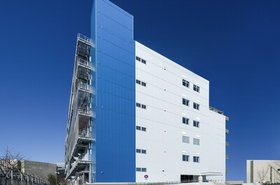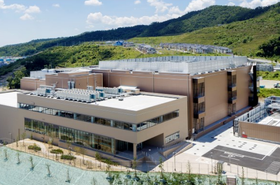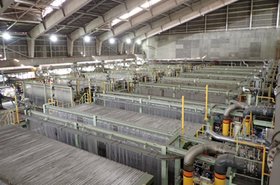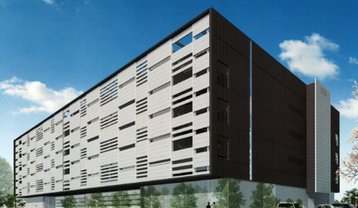The growth in the data center industry places it at the heart of society but also brings challenges relating to energy use and sustainability.
In June 2024, the BBC reported National Grid chief executive John Pettigrew saying that the UK boom in AI and quantum computing would increase data center energy use “six-fold in the next decade”.
So, while data centers are accelerating the UK’s leap into the AI and quantum future, they’re also a potential millstone around the nation’s net zero carbon emission goals. This is because the UK’s switch to renewable electricity generation such as wind, solar, and nuclear depends on energy efficiency across all sectors – i.e. reducing energy consumption rather than increasing it!
The data center sector is already acutely aware of its environmental responsibility so developers and designers are exploring ways to drive efficiencies by using technology that can provide more computing power using less energy.
This sees, for example, modern servers that can run at higher temperatures than their predecessors, thereby allowing data centers to reduce the energy needed for cooling and make more use of free cooling. Around 40% of a data center’s electricity use is needed for cooling, so any changes that can optimize efficiencies here can be critical to success.
Another way of addressing environmental concerns is to consider data centers as a source of heat energy. A significant way of reducing emissions would be looking for ways of capturing otherwise waste heat to reuse it in the center itself, or even in other buildings nearby, either to produce hot water or in larger-scale heat networks.
Mitsubishi Electric recently published a guide called ‘Data centers: Heat reuse for a low carbon future’ which examines how heat ejected from data center cooling systems can be re-applied in local heat networks.
Developments in heat reuse and heat networks have seen a new metric emerging as a critical benchmark: the Energy Reuse Factor (ERF). This measures how effectively a data center recycles and reuses its waste energy for purposes outside its primary operations.
The ERF is opening the way to a more sustainable future for data centers, underlining their role in the broader context of climate neutrality and energy efficiency.
The good news is that the technology to achieve this already exists in the form of advanced, modern heating and cooling systems that make the reuse of data center waste heat much more achievable.
Mitsubishi Electric has been extensively involved in heat reuse projects around Europe including Norway and Ireland, where its heat pump technology has been successfully used to deliver low-carbon heating to homes and businesses.
It's an approach that sits well with the UK’s drive to decarbonize heating alongside the updated commitment to extend the use of heat networks around the UK.
Mitsubishi Electric has a range of advanced IT Cooling Solutions that can help data centers achieve greater efficiency, show how heat can be reused for a low-carbon future, focus attention on solutions for hyperscale data centers, and look at DCIM.
You can download the free guide ‘Data Centers: Heat Reuse for a Low Carbon Future’ here
More from Mitsubishi Electric
-

Digital Realty and Mitsubishi open 34MW data center in Inzai City, Japan
Adds capacity to existing campus
-

Mitsubishi Corporation makes first US data center investment with $800m Dallas deal
Japanese company takes controlling interest in two facilities
-

Honda and Mitsubishi to test data center powered by waste hydrogen, using recycled auto fuel cells
By-product hydrogen will be pumped from Tojuyama's electrolysis plant in Shunan City

